|
Pork Roasts
Generally a larger cut that is used to serve several people. Roasts can range in size from as small as 2 lbs. up to 20 lbs. or more. They are available from almost all the primal cuts and vary in tenderness and leanness, depending on the cut they are taken from. Most are available bone-in or boneless and some are available cured, smoked and fully cooked, but generally they are purchased fresh. |
|
Blade Boston Roast
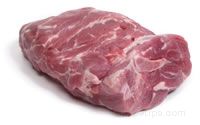
|
Sometimes called Boston butt roast, this roast is from the shoulder primal cut. The roast is tender and it contains a fair amount of fat which keeps the meat moist and provides good flavor to the meat when it is cooked. |
|
Shoulder Blade Roast
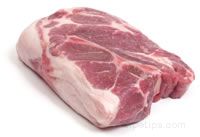
|
A roast from the shoulder primal cut, which is fairly tender and flavorful. This roast is cut from the section of the shoulder closest to the blade end of the loin. It is marbled with a fair amount of fat which keeps the meat moist and provides good flavor to the meat when cooked. |
|
Boneless Shoulder Roll
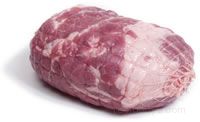
|
A boneless shoulder roll is a roast from the blade shoulder. The bones are removed and the meat is rolled and place in a string type bag, which remains on the roast as it is cooked to hold the shape of the roll. The boneless shoulder roll is available fresh, or cured and smoked. |
|
Picnic Roast
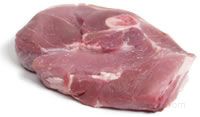
|
Sometimes called arm roast, this roast is a fresh cut that comes
from the shoulder primal cut and it contains more fat than the blade
Boston roast. A well trimmed roast provides a very rich flavor when
roasted. Often this cut is smoked and then it is referred to as a
picnic ham, although it is not a true ham. This cut is economically
priced. |
|
Blade Loin Roast
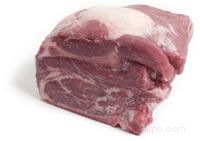
Bone In
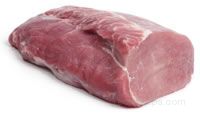
Boneless
|
Sometimes called rib end roast, this roast is cut from the end of the loin closest to the shoulder. It is leaner than the shoulder roasts but contains more fat than the other roasts cut from the center cut or sirloin end of the loin. It is available bone in and boneless. |
|
Crown Roast
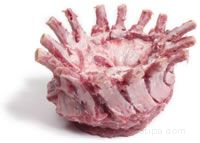
|
The crown roast is an elegant roast made from two center cut racks of ribs, which are bent to form a circle and then tied together with the bones facing out. The two racks are tied together with string to hold their shape and then the bones are frenched at the top so that at least one inch of bone is exposed. This roast generally must be special ordered and is priced higher than other roasts. |
|
Center Cut Loin Roast
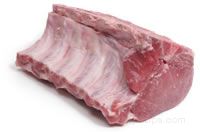
Bone In
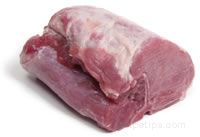
Boneless
|
A lean and tender fresh roast taken from the middle of the loin primal cut. It is considered one of the prime cuts of pork. It contains part of the backbone, which adds flavor but makes it harder to carve. The bones are sometimes frenched on this roast to make it easier to slice after cooking. When this is done it is called a rack of pork. This roast is frequently boned to make it easier to carve when cooked. The bones are sometimes tied to the roast to add flavor while cooking and they are then removed to carve. The rack of pork and the boneless roast will generally cost more and need to be special ordered. |
|
Rack of Pork
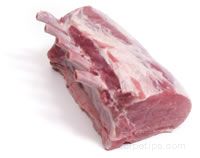
|
A rack of pork is a center cut loin roast that has had the bones frenched, which makes it easier to cut after it is cooked. You can french the roast yourself or you can have it special ordered already frenched. A special ordered frenched roast will generally cost more than an unfrenched roast. |
|
Sirloin Roast
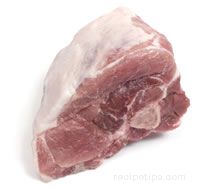
|
A roast cut from the sirloin end of the loin, which is the end closest to the hind leg. It is a fairly lean roast but contains part of the backbone and hipbone, which makes it harder to carve. Economically priced. |
|
Fresh Ham Roast
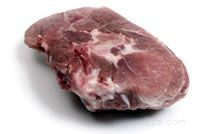
|
A roast, cut from the leg/ham primal cut, which has not been cured or smoked. It is lean and flavorful but because of its location on the pig, the ham roast is generally not as tender as the other cuts and its bone structure makes it more difficult to carve. A cut from the top of the leg is sometimes called a top leg roast or an inside roast and a roast from the bottom portion is called a shank roast or leg roast. |

